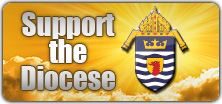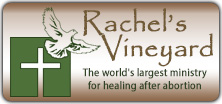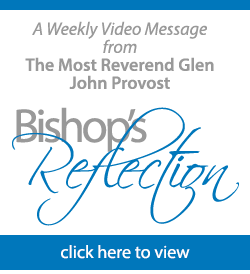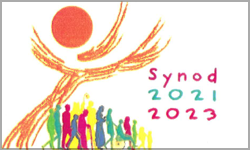Bishop Glen John Provost celebrated the Mass of Chrism with the priests of the Diocese on Wednesday, March 27, in the Cathedral of the Immaculate Conception. At this Mass, customarily in Holy Week, the Bishop blessed the holy oils to be used throughout the year for sacramental celebrations in the Diocese of Lake Charles. He addressed his homily to the priests and offered the following reflection:
Chrism Mass 2024
“To him who loves us and has freed us from our sins by his blood, who has made us into a kingdom, priests for his God and Father, to him be glory and power forever [and ever]. Amen.” Revelation 1:5-6
Last September I had the experience of my life! As you know, due to the unexpected incapacity of the pastor of the Cathedral to lead a group of parishioners to the Holy Land, I stepped into the role of chaplain for a pilgrimage. Not my first, as those of you who have been will know, each pilgrimage reveals something new.
On previous stays in Jerusalem, I had always been privileged to celebrate Mass in the Basilica of the Holy Sepulchre — at Calvary and in the chapel of the Magdalen — but never in the aedicule. There Christians have a firm belief that our Lord was buried, and they have reverenced the site to be such before and since the days of St. Helena. This sacred tomb, Chateaubriand wrote in his Mémoires, is the only one that “will have nothing to reveal on the last day.” When our extraordinarily well-informed guide announced that I would celebrate Mass with our pilgrims in this holiest of locations, I was overjoyed.
There were all sorts of restrictions. The Mass, which was to be the liturgy of Easter Sunday with readings and sequence, was not to last more than 25 minutes. The pilgrims could not exceed a certain number, understandably due to the severely restricted space. We made our way through the enormous crowd outside from lands at every coordinate, and I accomplished the rites. In the enclosure itself, so small, so compact, only a fellow pilgrim server and I fit through the four-foot door into the enclosure, the Holy of Holies, the place where it all happened.
“It” — what is “it”? Life conquered death. God established definitively His dominion. Hope was restored. The power of Satan was put to flight. Grace prevailed. The gates of heaven were opened to mankind. Not an insignificant “It” this!
“To him who loved us and freed us from our sins by his blood, who has made us into a kingdom, priests for his God and Father.” I thought of you, as I read the readings of Easter Sunday and remembered the Sacrifice of Calvary, “a kingdom, priests for his God and Father.” We are so blessed to be priests, and we are doubly blessed to be priests in Lake Charles, in Southwest Louisiana, in the present time, surrounded by people who love us, not motivated by gain but by “him who loved us and freed us from our sins.”
The People of God look to us to represent Christ to them. At the heart of this mystery is, of course, the Eucharist. In the True Presence we find the heart of the matter, the death, the sacrifice, the Resurrection, freedom “by his blood.” We partake of His Body and Blood, and then we depart, without finality, into the world to bring His presence to others.
I recall once long ago hearing it said — was it St. Ignatius of Antioch — “Better to be silent and to be than speaking not to be.” Of course, he referred to prayer, but I think the lesson can just as well be applied to the active life. If you live long enough as a priest, you will marvel when someone from your past — a former parishioner or student — will say, “I’ll never forget what you told me” or “Father, do you remember when you married us you said…” or, as Robert Lowell, one of America’s greatest poets, wrote to Bishop Schexnayder, the second bishop in Southwest Louisiana, towards the end of his life, “you were a road over a dark stream.” Eloquent or not, complex or simple, poetic or prosaic, exalted or humble — the sentiments rise up from the hearts of people who love their priests, not because of the priests’ sparkling personalities or ingenuous intellects, but because priests are Christ to them when they need to hear and see the One who redeemed them by His blood. These moments of identity arise from, what I would call, the silences of the priesthood. These are moments so silent we usually discount or forget them. But the men and women to whom we minister remember. God wills it so.
One of these silences is celibacy. I shudder when I hear suggested that celibacy is “merely a discipline,” easily dispensed, laid aside in the expectation that the absence of its requirement will entice vocations. We should inquire with our Protestant brothers and sisters if this is their experience. I call celibacy a “silence,” because the priest lives it in a very personal experience with God. We need not speak of it. Celibacy speaks for itself, hence its silence. In the words of St. John Paul II, “The vow of celibacy is a matter of keeping one’s word to Christ and the Church, a duty and a proof of the priest’s inner maturity; it is the expression of his personal dignity.” No one parades his dignity. His composure reveals it. His serenity bespeaks the inner reality.
Another and indispensable silence is prayer. Where would our lives be without prayer? We would be a noisy gong and a clanging cymbal (cf. I Corinthians 13:1) not knowing love. We would be at best the dry bones of Ezekiel awaiting flesh in the valley of death (cf. Ezekiel 37). At worse, we would resemble the children in the town square missing our cue to mourn or to rejoice (cf. Matthew 11:16). As Pope Benedict so well expressed it, the people look to the priest to be an expert in prayer. What do we offer them when we do not pray? We will never know what could have been, if we do not pray as we should.
One of the other silences in the life of priests is that serendipitous moment when we realize that something in our past had meaning. I seem to think this is what happened to Mary at the Presentation in the Temple, when Simeon told her, “Behold, this child is destined for the fall and rise of many in Israel, and to be a sign that will be contradicted (and you yourself a sword will pierce) so that the thoughts of many hearts may be revealed” (Luke 2:34-35). How could she have known the full significance of what he said? But someone remembered, no doubt she herself. As the years passed, Simeon’s words took on new and deeper meaning, until finally in that upper room at Pentecost, perhaps, the prophecy was understood. We should watch for the silent moments of meaning in our lives as priests — when we come to understand better why God might have called us to this life, when we see how God might have transformed our weaknesses into strengths, how what we thought forgotten comes back remembered to benefit others and give glory to God.
Is not this active and fruitful silence what happened to Mary? She “kept all these things in her heart” (Luke 2:51) until all made sense. She trusted in God’s promises. She lived observantly, watching, waiting. In this, I think she is our model as priests.
As I departed the aedicule having celebrated the Sacrifice of the ages, “[s]omething quite remote from anything the builders intended [had] come out of their work” — to quote one of my favorite writers (cf. Evelyn Waugh). Silence prevailed such that even the noise of shuffling pilgrims could not disturb. The silence revealed a mystery, and the mystery was eternal. The mystery was yours and mine and stretched beyond the age of Helena and Geoffrey de Bouillon and defied the sword of Saladin at Hattin. The mystery is Christ, and we are privileged and blessed to be His priests. Praised be Jesus Christ, our priest, who lives and reigns, forever and ever. Amen.
















